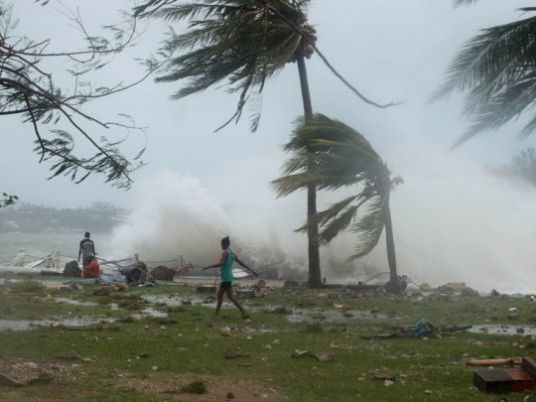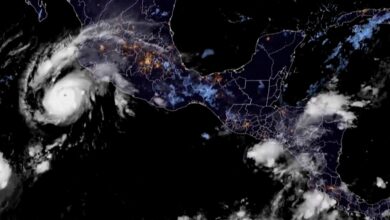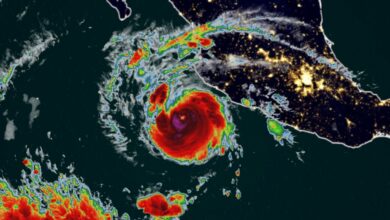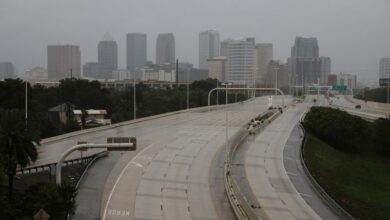
Super Cyclone Pam left a trail of "complete devastation" after it smashed into the Pacific island archipelago of Vanuatu on Friday, aid groups said, amid fears that the storm may prove to be one of the region's worst-ever weather disasters.
The maximum Category 5 storm slammed directly into the island with winds of up to 320 kilometers (200 miles) an hour.
"The scene here this morning is complete devastation – houses are destroyed, trees are down, roads are blocked and people are wandering the streets looking for help," said Save the Children's Tom Skirrow, speaking from the capital of Port Vila.
The full extent of the damage remained unknown on Saturday due to the limited communications networks in place on the island, but the UN has received unconfirmed reports of 44 people killed in one province alone.
"While it is too early to say for certain, early reports are indicating that this weather disaster could potentially be one of the worst in Pacific history," UNICEF New Zealand's executive director, Vivien Maidaborn, said in a statement.
Residents of Port Vila spent the night bunkering down as the storm raged, waking to find trees had been uprooted, homes destroyed and areas flooded.
"We could see some loss of life, potentially serious loss but we don't know yet," Sune Gudnitz, who heads the United Nations Office for the Coordination of Humanitarian Affairs in the Pacific, told AFP.
"The feedback is that there appears to be quite widespread devastation. There is debris in the streets and widespread flooding."
UNICEF spokeswoman Alice Clements described the cyclone as "15-30 minutes of absolute terror" as it passed over.
"We have some very unconfirmed reports of casualties from the outer islands as well, but we're waiting to get official confirmation on those, which is very sad news if it's true," she told Radio New Zealand.
Aid agency appeals
The storm crossed the main Vanuatu island, home to more than 65,000 people, and a group of islands further south with a population of 33,000 after hitting the Solomon Islands and Tuvalu, where there were no reports of fatalities.
Red Cross Pacific regional head Aurelia Balpe told AFP that in one southern part of Vanuatu, islanders packed into caves and other makeshift shelters using "traditional coping strategies".
Aid agencies have launched appeals and are hoping to start flying in emergency supplies of food, shelter and medicine on Sunday, when the airport in Port Vila is expected to reopen.
"We are extremely concerned for the safety and well being of tens of thousands of people as one of the most intense cyclones to ever hit any Pacific country continues to batter Vanuatu," said the Australian Red Cross head of international programs, Peter Walton.
United Nations chief Ban Ki-moon, speaking from Japan, said that while the full impact of the storm was not yet clear, "we fear the destruction and damage would be widespread" as he offered his condolences to the people of Vanuatu.
Fiji Weather Service meteorologist Neville Koop said the cyclone was weakening as it slowly moved away from Vanuatu, and would pass between Fiji and New Caledonia before brushing the North Island of New Zealand on Monday.
Koop said Pam was not the strongest cyclone for the South Pacific, with Zoe packing bigger winds when it hit Vanuatu and the Solomon Islands in 2002.
Australia's Foreign Minister Julie Bishop said that Canberra was ready to assist, with medical and search and rescue staff on standby, while New Zealand immediately earmarked NZ$1 million (695,000 euros) in initial funds to assist Vanuatu as well as Fiji, Tuvalu and the Solomon Islands if needed.




